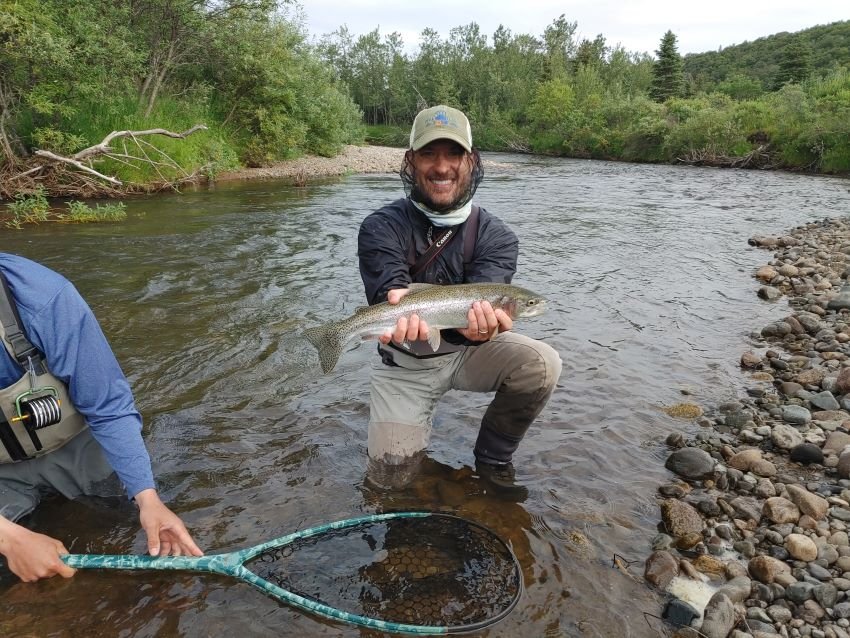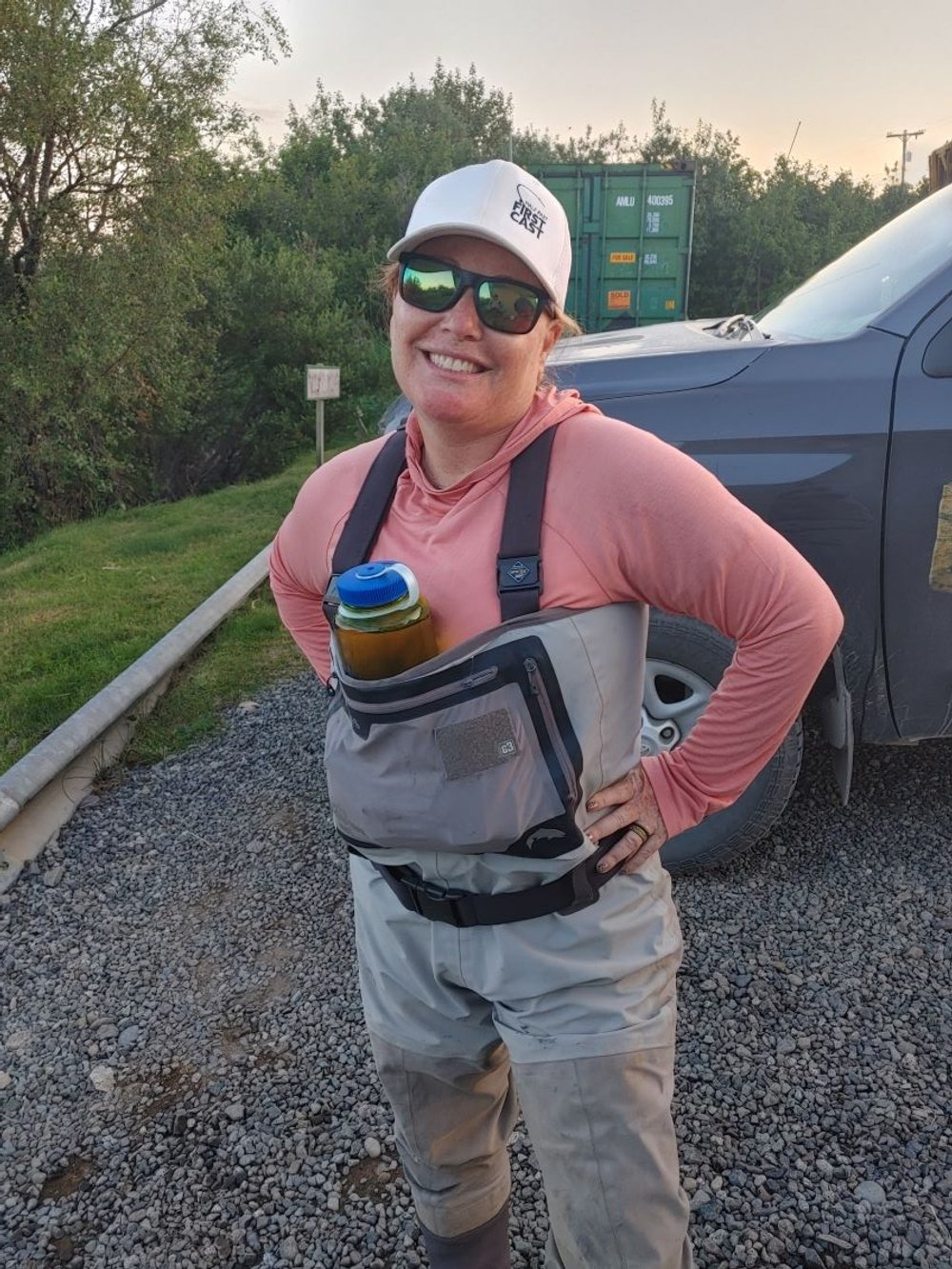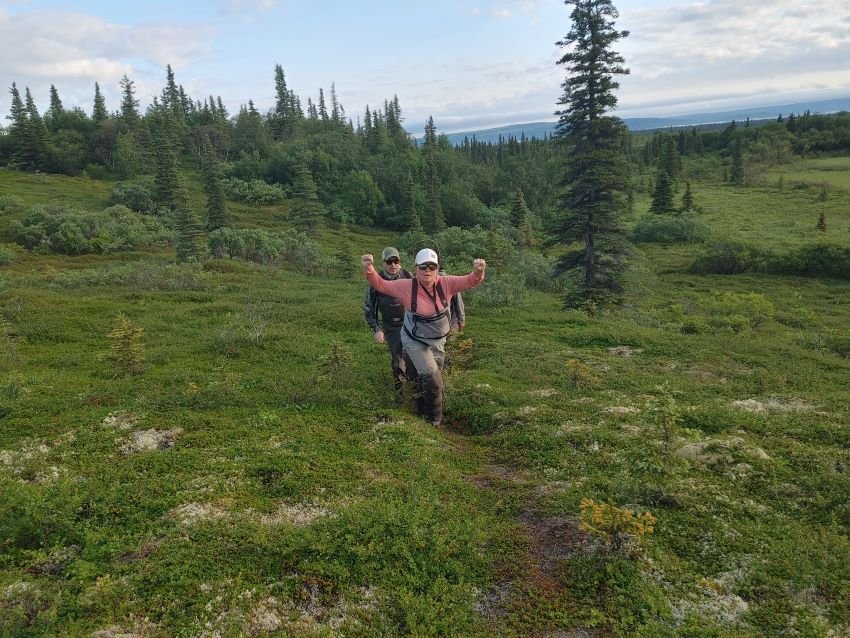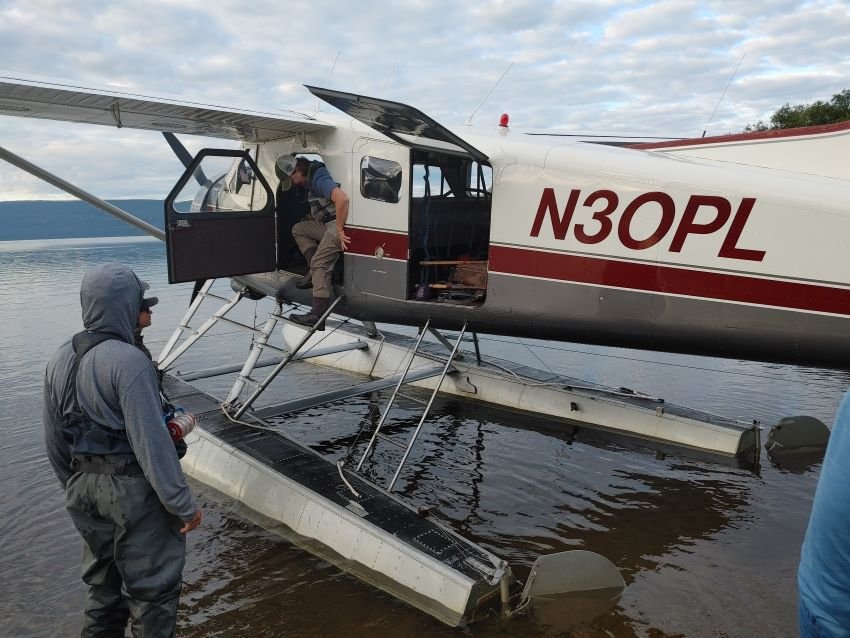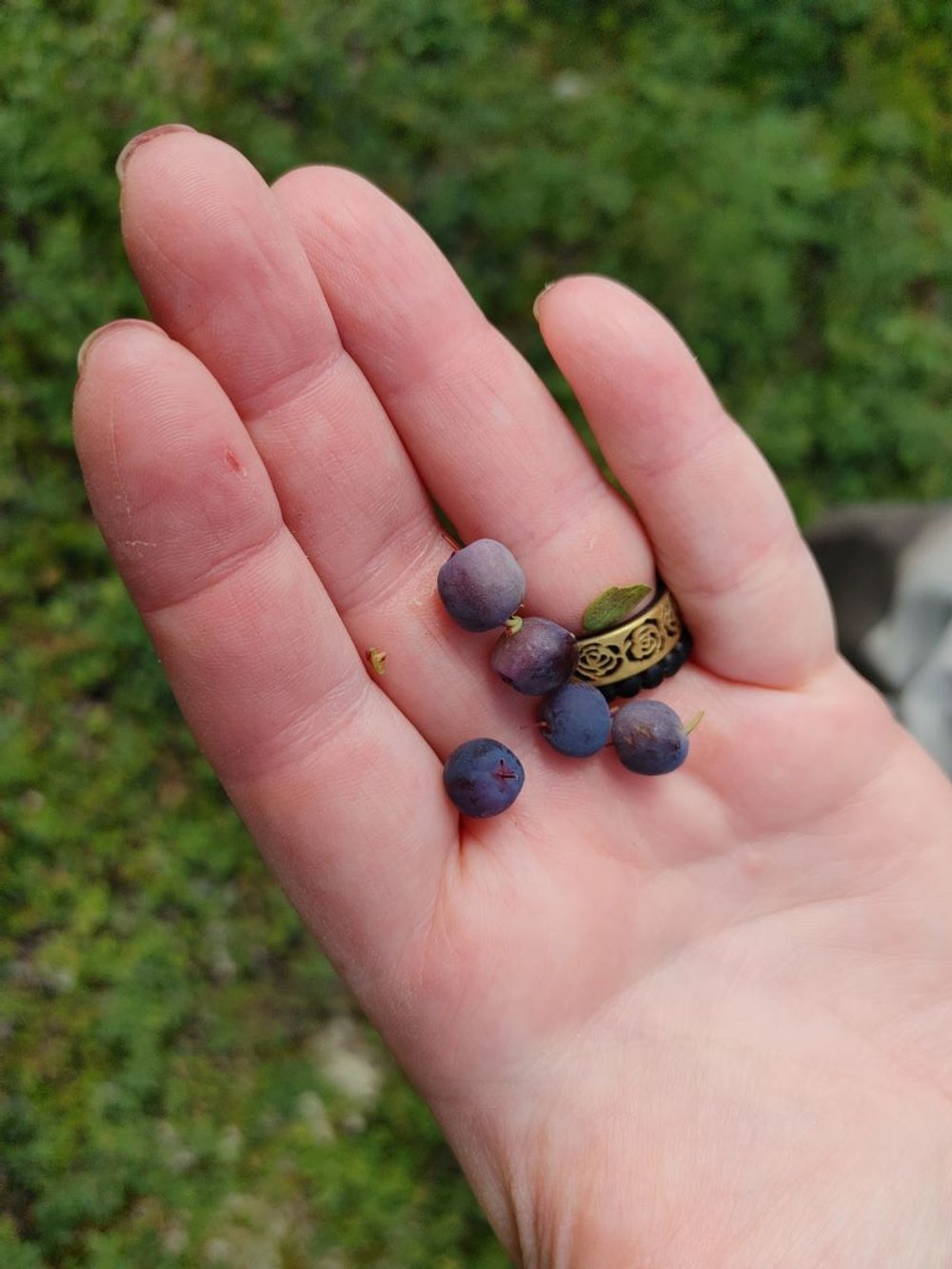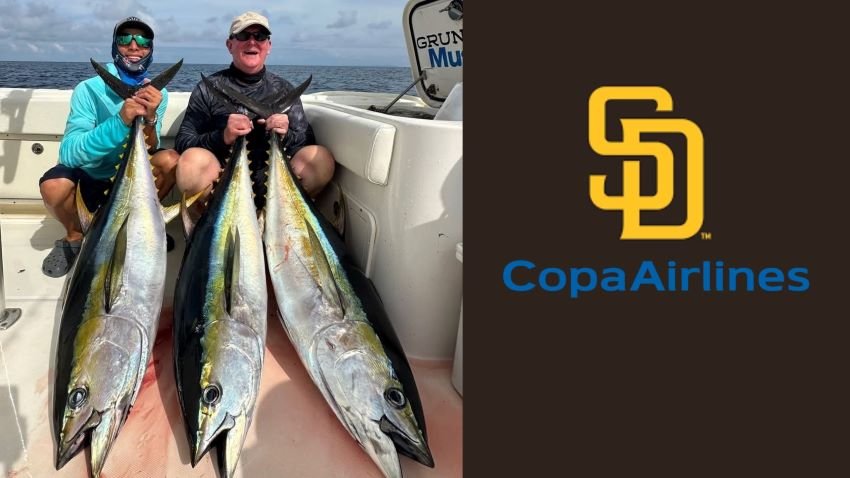The Middle-Aged Angler’s Guide to Hiking the Tundra
While fishing on the Naknek River right in front of Bear Trail Lodge can be exceptional, my favorite fishing days in Bristol Bay have been the flyouts to isolated streams loaded with rainbow trout, grayling and Dolly Vardens. It’s special to be dropped off someplace that few people will ever fish and to have it all to yourself – except for the occasional bear, moose or eagle in the background.
Bear Trail had access to about two dozen of these adventures, and they’re well aware of how they’ve fished historically and the best times of year to hit each one. They’ll also advise you on how much exercise you’re going to get while you’re there. On some you can fish almost precisely where the float plane drops you off, while others require extensive hikes to get to the prime waters and then to where the plane will pick you up. My favorite day on our 2023 trip involved a nearly 2 mile hike up and down substantial hills to get in, nearly five miles of wading in the current, and then 2 more miles to get to our ride home. It wasn’t walking on pavement, either. The ground consisted of tundra, an underlayer of permanently frozen ground topped by a spongy surface covered in various plants, bushes, lichens and other materials.
Because it gives when you step on it, a “tundra mile” is substantially more difficult to hike than a “regular mile,” and perhaps a bit more treacherous. Trust me, it’s worth working for your fish. While you may be winded by the time you get to the stream, you’ll recover quickly once you’re in the water battling virginal fish, and you’ll more than earn your cocktail and oversized dessert that evening.
Before you go, however, here’s how I suggest you prepare to attack to the effort:
Get in Shape – Before you even arrive in Alaska, you should get in the best possible shape. You don’t have to be a bodybuilder, but a consistent regimen of cardio will prepare you for these sometimes-lengthy hikes. You don’t want to be too tired to fish, nor do you want to be so tired that you can’t tell fish stories at dinner, and you certainly don’t want to get injured.
Be Realistic About What You Can Do – You should have a pretty good idea of your capabilities going into this -- and write checks that your legs can’t cash. Remember, once you’re out there, there’s no calling an Uber to pick you up. Ask the staff what they think about the difficulty level of a particular outing and heed their advice.
Schedule Appropriately – If you’re not quite sure what you can do, or you’ve never hiked on the tundra (I compare it to hiking on sand at the beach), start with a comparatively easy outing. Most people fish three or four days at Bear Trail Lodge, so start comparatively easy, put a “boat day” on the schedule to recover, and then close it out with your most challenging flyout.
Go Light – Your guide will carry in the rod case, leader material, a net, and your lunch, but don’t think that gives you an ability to haul a bunch of extra gear. Personally, I just bring my phone and use that as a camera. Hanna brings a GoPro. Others who are more confident in their water bound footing may bring a DSLR, but anything more than that and you’re asking to be extra tired or to damage your gear. A small waterproof pack is doable, but not much more.
Get Hydrated – Even if it’s cool out, these hikes will make most of us sweat, but you may not realize that you’re getting dehydrated. Bear Trail gives everyone a water bottle to take home. Fill it before you fly out and then ration it out over the course of the day. I chug a full bottle before we go, too. It may require a pit stop or three (not ideal in waders) but I think it’s a wise choice. Your guide may also bring a water purification pump but I’ve never used that.
Layer Up – Because the weather may change several times over the course of the day, you’ll want to layer up. Good socks are a must to prevent blisters, and a light rain jacket never hurts. You may go from overheating and sweaty one second to standing (wadered) in 50 degree water the next, so become a quick change artist.
Bug Spray and Sunscreen – It can get pretty buggy in the thick bushes, so get yourself covered in repellent, or even consider a head net. Alaska may not be the Caribbean, but the sun still shines a lot, and the glare off the water makes sunscreen extra critical.
Take your time – Now for the actual hiking. I know you want to get to the fishing portion of your day. After all, that was likely the primary motivator for making the haul out to Bristol Bay in the first place. Don’t worry – the fish will still be there when you get there. Don’t overwhelm or injure yourself on the hike in. There are holes that are tough to see and logs you’ll need to step over. Your guide will likely be younger and in better shape than you and he or she is used to making these hikes. They’re exceptionally patient and doting so don’t feel that it’s a race.
Take Small Steps – The best way I’ve found to avoid falls and injuries is to take comparatively small steps, both on the tundra and in the streams’ currents. If you lunge or extend yourself, and then one foot falls into a hole, or lands on a slick rock in an awkward position, that’s a recipe for disaster (and possibly waders full of cold water). Again, it’s not a race. Get there in one piece by maintaining your balance. When crossing some of the swifter streams we locked arms in groups of three to get across safely.
Leave Space – Other than when you’re linking arms, keep space between you and the person in front of you. That way, if one of you falls you don’t take the other one down with you. I also like to watch the footholds of the person in front of me to gauge where I can step. Don’t pressure the person in front of you, and if you feel like the person behind you is creeping too close then swap positions.
Remember, You’re in Waders – If there’s a trench that you could normally leap over in shorts and light hiking shoes, you might not be able to get the same amount of air when wearing chest-high waders and wading boots. The ones that Bear Trail provides are top notch, and far better than those in past generations, but they’re still a bit clumsy and awkward. Again, let discretion be the better part of valor when choosing your route and your speed.
Take Breaks – Finally, there’s no shame in asking the rest of your group to take a short recovery break. Stop and have some water and rest your legs for a moment. Even if you don’t need the rest itself, the stops are valuable for other reasons. We found berries and fossils in the tundra. We also admired some picture-perfect scenery. You can’t swing a moose antler in Alaska without seeing some true Nat Geo sights, but you need to step back for a second, be present, and realize how lucky you are to view them firsthand.
If you’d like to go to Bear Trail Lodge and experience this for yourself, email us and we’ll let you know more about this exceptional trip option. I cannot stress enough that words don’t tell the full story of this wild American gem.


